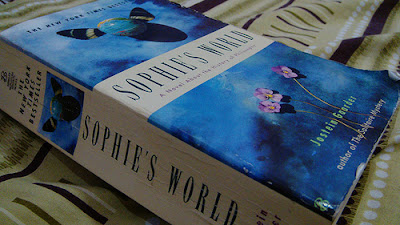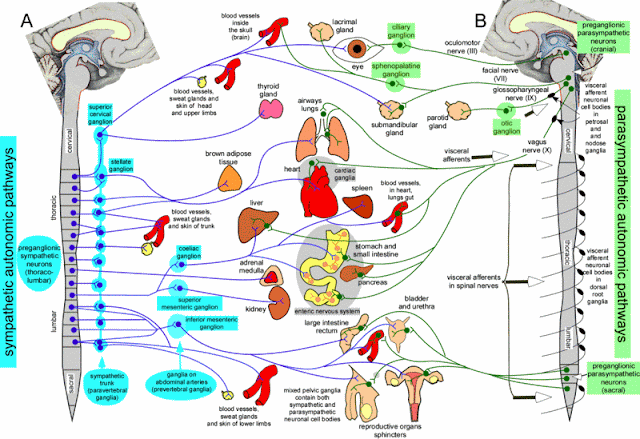The hierarchical levels structure of the description domains:
basically corresponds to the so-called natural sciences, and has two distinctive features:
the first is that each level of description contains the lower levels, extending them and it s based on them:
in this sense chemistry is based on physics but at the same time is more than physics, biology is based on chemistry etc. As noted by Anderson this does not mean that each level is a simple or direct extension of the lower level(s), since at any new level some emergent phenomena arise which bear no relation or that can be explained by the lower levels, even if they depend from these.
The second is that each of these areas of description, with many above and below-levels, intermediate levels, mixtures of levels etc., is based (has as "foundation") on the physical level 0. Of course, leveling up the properties of the physical level are becoming less relevant to the description at that level, if not for the fact - taken for granted, and therefore became "transparent"- to obey the laws of the lower levels.
For example, just imagine a psychiatrist at level 4 visiting a patient with mental disorders. The psychiatrist may need to obtain information from lower levels of the patient to have a complete diagnosis, for example by requiring blood or genetic tests, but he does not expect the patient begins to rise for air and began to fly out the window for the laws which apply at level 0, or that his blood is made up of hydrocarbons to the laws that apply to level 1 and 2.
The vertical hierarchical levels structure becomes also with an horizontal extension when considered in three dimensions:
in this case at each level is associated a hierarchical and/or logical plane which includes all the topics of description of that level. If an higher level emerges from the lower, as in the case of the biological phenomena from the chemical level, then the gap between levels in not only hierarchical but also logical,in the sense that the descriptions in the biological domain necessarily become meta-descriptions obsrved from the lower chemical level - not only they will be quantitatively more extensive, as occurs between physics and chemistry (although some chemical phenomena such dissipative structures by Prigogine or the hypercycle theory by Eigen are not immediatly referable to physics), but will be qualitatively and logically different. The same is valid for the higher levels: the communicative interaction and the rising of social structures among organisms are not referable to their biology, and so on.
However, there are many areas of description that does not have a base level 0; among the many is enough to remember the so-called social sciences - such as literature, history, pedagogy, etc. - plus a number of areas of non-immediate placement but to self-evidence or self-definition, such as art, music, economics, linguistics, artificial intelligence, psychology etc.
It is also to be noted, for the distinction between map and territory, that even for the description domains of the natural sciences what are based on the lower levels are the objects/topics of the description, in particular always on level 0, but not the description domain itself which, as such, has no physical material aspect - if not the paper books or data bits which describe it or the cerebral activity of those who are thinking that description. In this sense physics or chemistry are la fisica o la chimica are no less "immaterial" of literature or music.
Besides, there are at least three description domains which are transversal with respect to the hierarchical structure and to many others description domains non-hierarchical.
The first, classically, is the one of philosophy: with its meaning from the greek φιλοσοφία, composed by φιλεῖν (filèin), "to love", and σοφία (sofìa), "wisdom", that is"love of wisdom", philosophy potentially applies to any description domains, from physics to art. A single definition of philosophy is not possible because every philosophical system of some significance (and there are at least dozens, if not hundreds, in the course of at least 3000 years) has in its conceptual foundations a redefinition of the meaning, scope and purpose of philosophy. In its research dialogue upon something rather than of something philosophy is intrinsically a meta-domain of description, as it provides essentially meta-descriptions; applied to several specific areas of description it divides in several fields of specific meta-description as metaphysics, ontology, epistemology, ethics, aesthetics, of language, of science, of history, of specific sciences and specific histories etc.
The second is the study of the mind, or more specifically of mental processes. Also in this case the description domain depends from the definition of mind, whether considered as an emerging phenomena defined as the whole of the brain higher functions or as something more extensive intended as a mental process beyond the brain and not necessarily requires its presence. In the framework of the philosophy of mind (or philosophy in general) have been proposed models which are exactly opposed, from those who consider the mind all and only "inside" the brain (and therefore a product of the cerebral activity) to those which consider it (at least in part - but in the essential part: consciousness, if not even in its entirety of mind-consciousness-soul, and in this case is more defined as Mind) entirely outside of the brain.
In the figure the mind is intended primarily as a process (in various forms) in a larger system that does not necessarily limit to the skull, but that can extend to an environment/ecosystem in which the mind works; this conception of mental process was proposed independently and quite complementary in the 70s-80s by Gregory Bateson and Humberto Maturana, and later developed by Francisco Varela in the context of the cognitive science, but of course has several preconditions in various philosophical systems of the past.
It should be noted that - singularly - does not exist a specified organized "science of the mind", the so-called "mentalics" described by Isaac Asimov; the various aspects of it are divided into a number of fields ranging from anatomy to neurophysiology to psychiatry to psychology up to artificial intelligence.
The third is complexity, or science of complexity. In its intrinsic characteristic of multi-dimensionality, which it divides among all possible description domains, lthe study of complexity is intrinsically trasversal to any organized discipline.
Finally there is the possibility of a laterality over the several description domains, based on the so-called lateral thinking, to be intended as a description and logical path which transversally and laterally crosses the various description domains, capturing the aspects which singly taken would not have any particular interest, while collected together and interrelated in a specific description path may bring out new descriptions typically multi-disciplinary and multi-dimensional. Laterality may occurs between any level of several systems, in particular has been often applied as a technique in philosophy to conceptual (or partially conceptual) systems, such the philosophical ones and leads, and has lead in the history of philosophy, to next new systems than the previous.
A classical example of this type is the work of Douglas Hofstadter, where lateralizing description domains very far apart such formal logic, music and visual arts he revealed the common pattern of Strange Loop.





























































